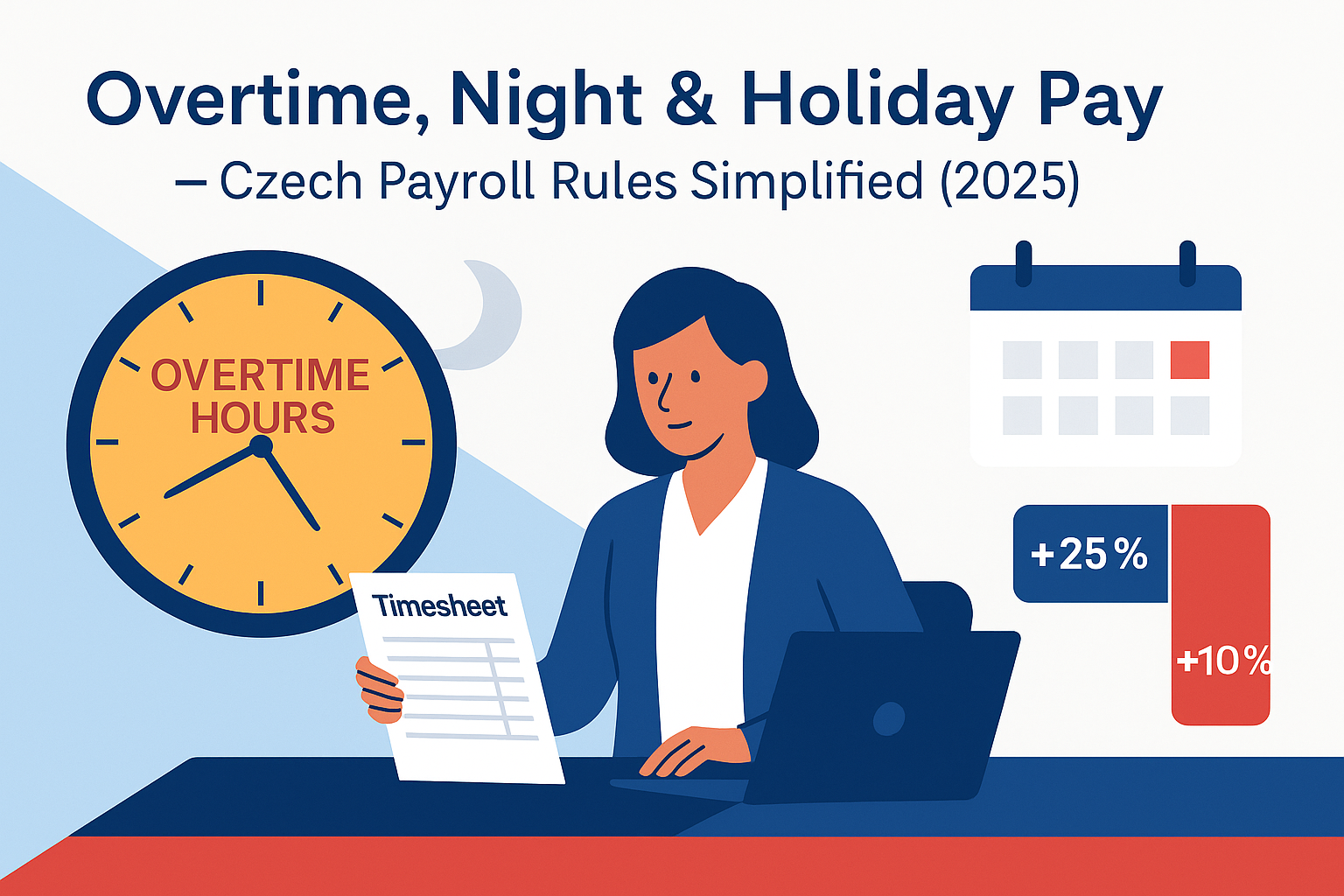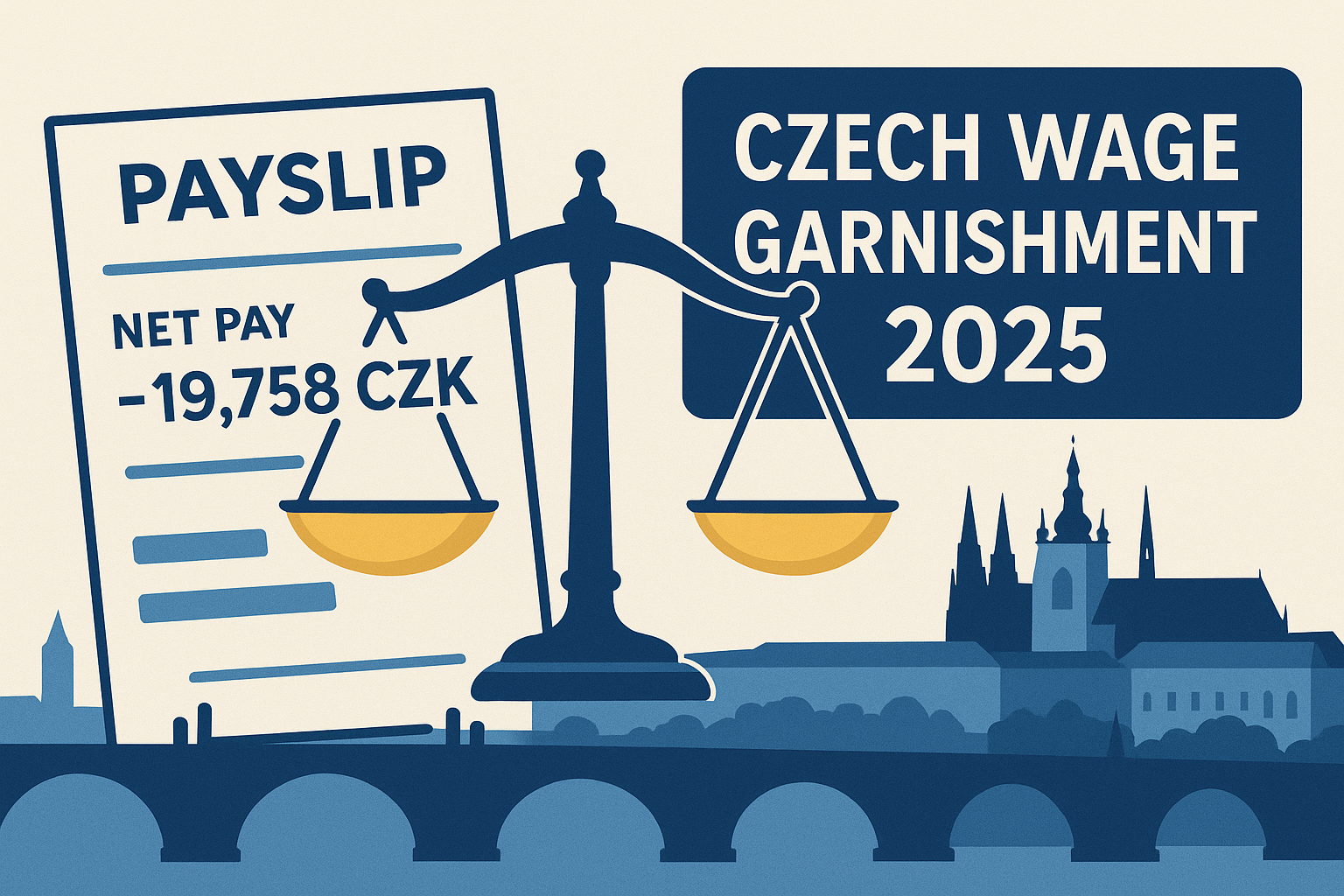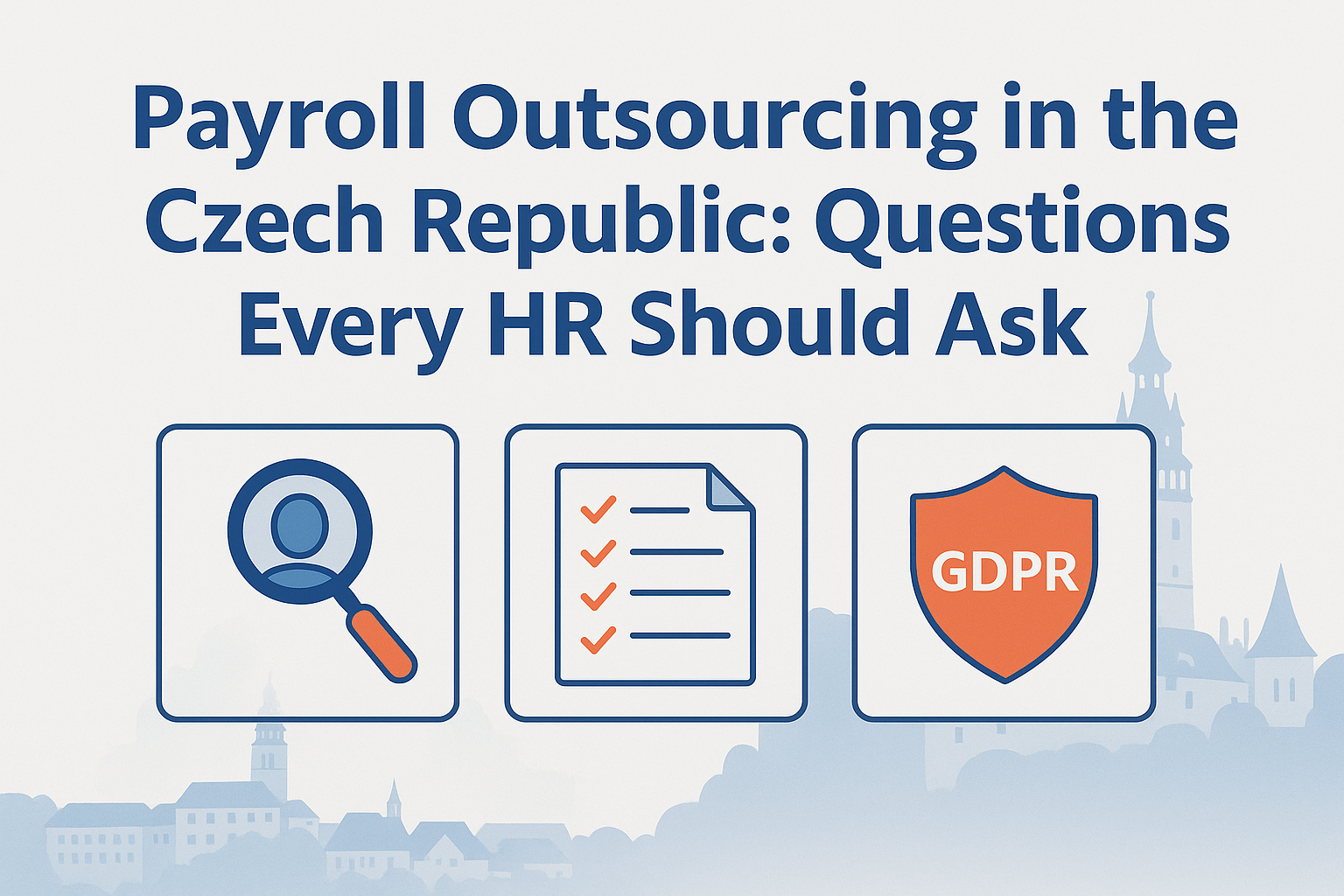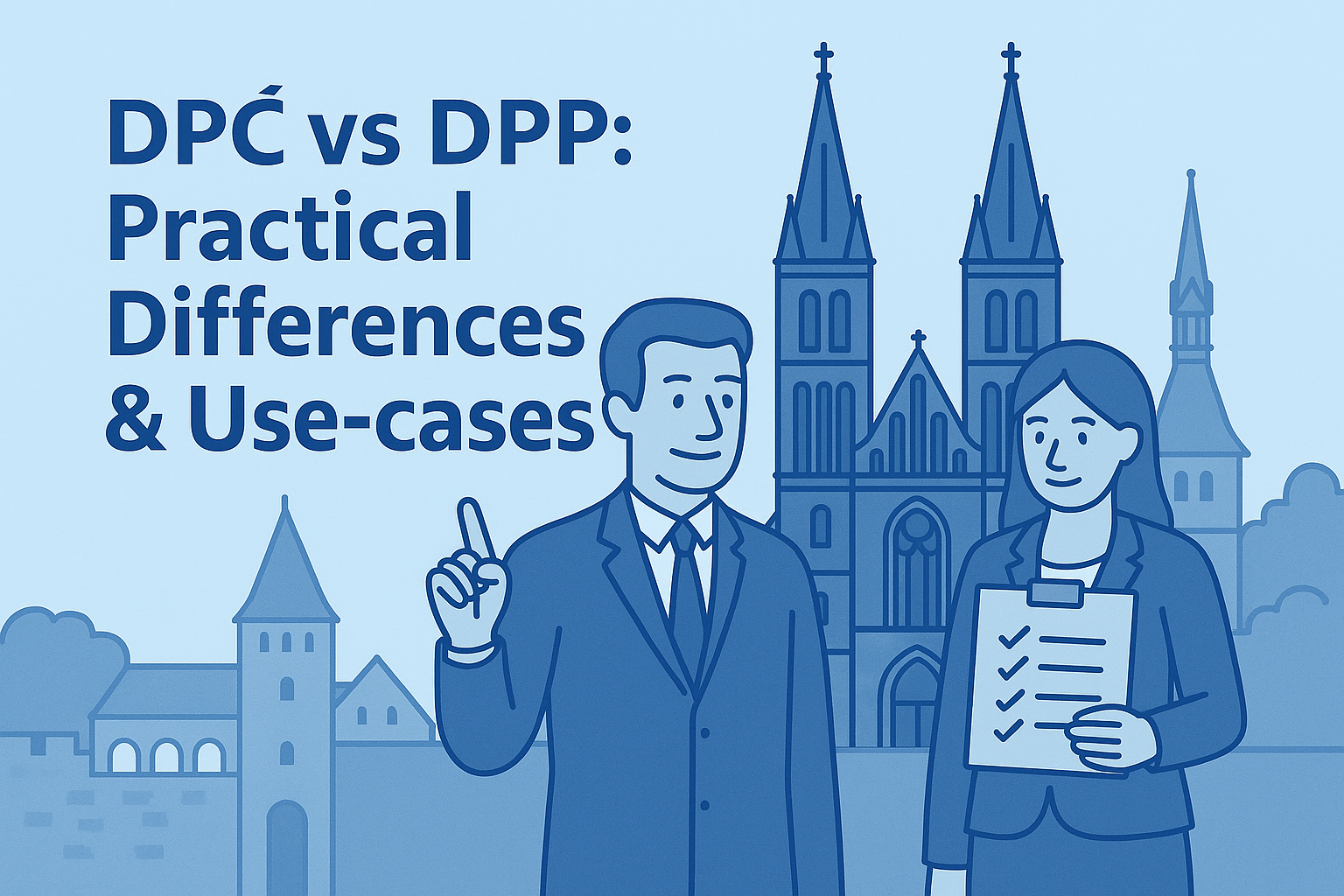1) Definitions
Net salary (netto) = amount after mandatory statutory deductions from gross salary (income tax advances, employee social & health insurance, basic tax credit if applied). This is the definition we consistently use at CzechPayroll.com.
Take-home pay (bank payout) = the amount actually received to the bank after all additional items are applied (voluntary deductions, garnishments, salary advances, meal voucher deductions, etc.), plus/minus any non-taxable reimbursements or bonuses paid separately.
2) What “Net salary” includes on Czech payslips
| Item | Net Salary | Notes |
|---|---|---|
| Employee social insurance | Included (deducted) | Mandatory deduction from gross (confirm current year rate and any caps). |
| Employee health insurance | Included (deducted) | Mandatory deduction from gross. |
| Income tax advance | Included (deducted) | 15% / 23% bands apply to the tax base; the basic taxpayer credit reduces the advance if claimed. |
| Basic taxpayer credit | Included | Applied monthly when the signed taxpayer declaration is in place. |
| Tax bonus on children | Depends | Can increase the payout if allowances exceed the tax; keep monthly vs annual logic clear. |
| Employer reimbursements (travel, per diems) | Not part of net | Shown outside net as non-taxable refunds; they adjust take-home. |
Note: Always verify the current year’s rates, thresholds, and credits before payroll close.
3) What changes the “Take-home” amount
After you compute the statutory net salary, apply all additional payroll items that affect the final bank payout (take-home):
4) Common mistakes & clarifications
- Mixing reimbursements into net: Reimbursements are not part of net salary; show them separately to keep the net definition clean.
- Thinking “net = bank payout”: Take-home can be lower (deductions) or higher (reimbursements, tax bonus) than net.
- Ignoring signed taxpayer declaration: Without it, the basic taxpayer credit isn’t applied in the monthly advance.
- Confusing monthly vs annual logic: Some credits/bonuses reconcile annually; monthly view may differ from year-end results.
5) Simple controls for HR/Finance
- Ensure net salary equals gross – mandatory deductions ± taxpayer credit/bonus per current rules.
- List all items after net (garnishments, advances, voluntary deductions, reimbursements) with clear plus/minus signs.
- Match final payout to the bank file and payment proofs.
- Keep employee acknowledgements for voluntary deductions updated.
Need a clear Czech payslip explanation?
See our bilingual payslip guide for expats — line-by-line breakdown so you understand every figure on your Czech payslip.
Disclaimer: This guide is general information and not legal/tax advice. Always verify current thresholds, rates, and deadlines.






